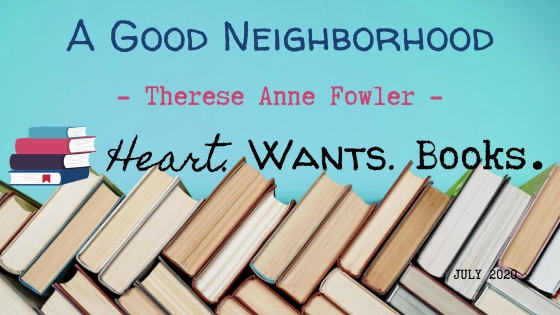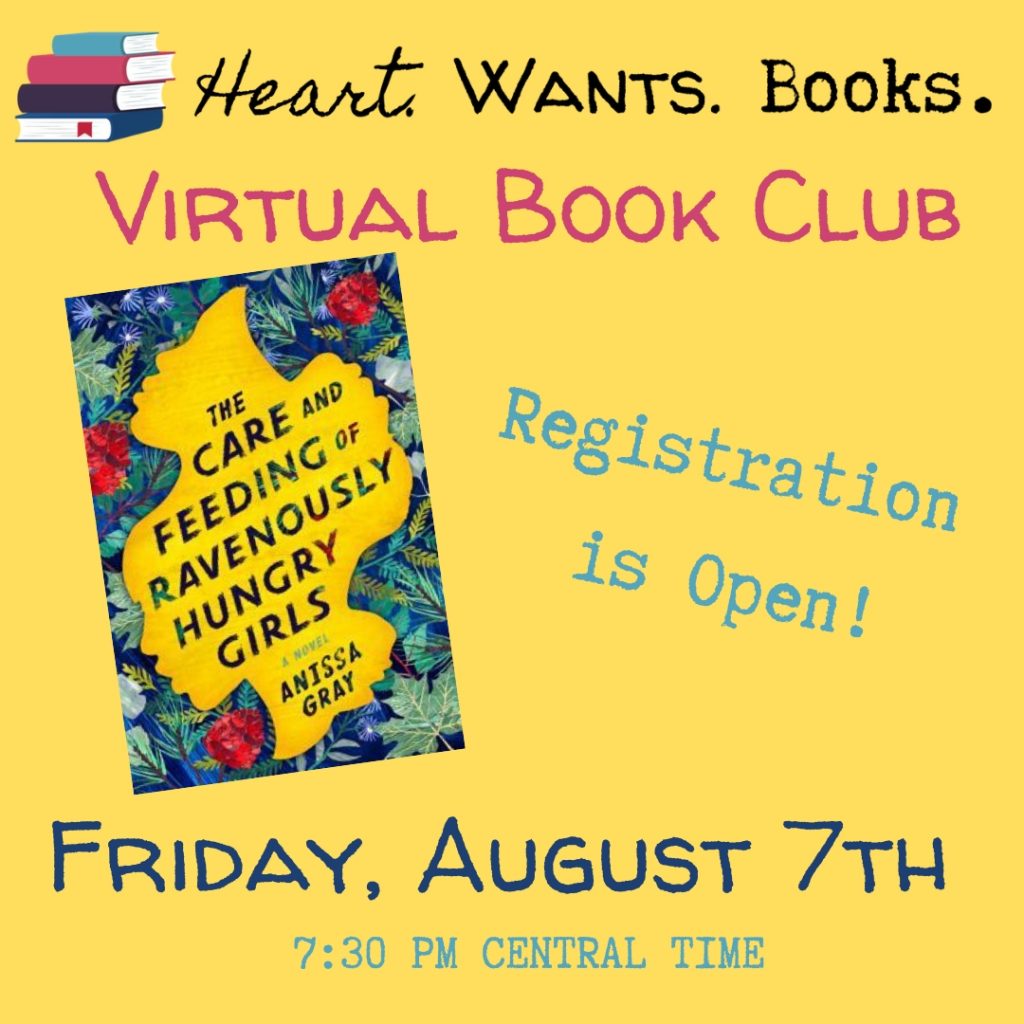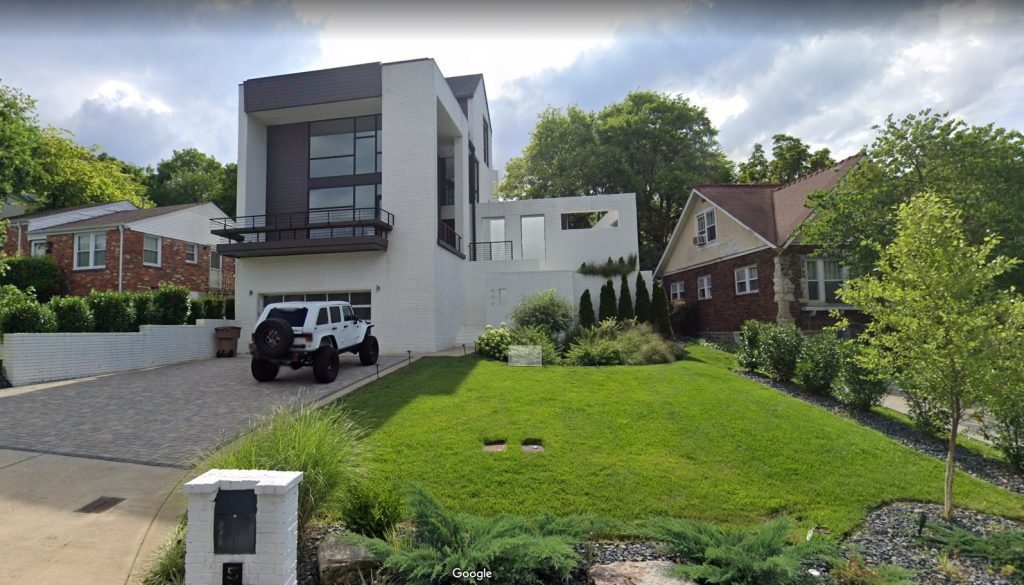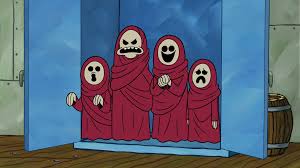A Good Neighborhood by Therese Anne Fowler July 2, 2020

The following post includes affiliate links. More details here.
Data: If you haven’t completed our reader poll, it is still open for a little longer and we’d love to hear from you! If you’re reading this, your opinion matters! If you love data, please give us some data to love! Thanks to our dear readers who’ve already completed it.

Invitation: Virtual Book Club Part Trois is coming to a screen near you on Friday, August 7 at 7:30 p.m. CST. We’ll be discussing The Care and Feeding of Ravenously Hungry Girls by Anissa Gray. The Kindle edition of title is on sale now for $2.99 (up from Monday)! If you’re interested, registration is open here.
There are many non-fiction books out about race, and this is not one. This is the fictional story of neighborhoods all over the country, of people, and of how we interact with others and the world around us. It is gorgeously written, and I adore our unnamed narrator who lets us into the backstory of all our players over the course of the novel. While I hated the asides to the audience in “Emma,” they make all the difference in Therese Anne Fowler’s A Good Neighborhood. This is also a book by a white woman (I know, not diverse), and she addresses that in the acknowledgements, so don’t skip them (ever, but they’re at the beginning of this book for a reason).

A Good Neighborhood is the story of a neighborhood and the people who live in it. It’s a story of change and transition. It’s also the story of the individuals who inhabit the neighborhood, their pasts and their present. As we open, there is a new, fancy house in a simple old neighborhood and I’m immediately wondering what neighborhood this could be in my metro area (and texting Ashley to discuss it). We have a few ideas, but my mind immediately goes to the neighborhood of my old office. My grandparents lived in the area when they were first married in the late 1940s, so I know a bit about the history of the neighborhood from them, but also from working there for several years. I’ve seen gorgeous, small, historic homes be sold, torn down, and “tall skinnies” built in their place. While those homes are gorgeous examples of modern architecture, they tower over their neighbors the way trees did before the house took up the whole lot and they completely change the aesthetic of the street, and alter the neighborhood.

There are so many lessons to glean from this book. Valerie’s lessons of how trees are affected by the construction choices we make is very valuable to me, as I look out to my back yard with old trees (especially compared to those found in newer neighborhoods in my relatively young suburb) and how to persevere despite tragic, sudden loss (and also get life insurance before you have kids, or now, whichever is sooner). Julia shows us what it is to get caught up in someone else’s dreams, how it feels to realize that, and what it looks like to break free. Xavier shows what can be accomplished with passion, commitment, and hope as he participates in his family, school, and neighborhood, working hard to make his dreams come to fruition, until tragedy strikes. Juniper demonstrates resilience as she navigates the dichotomy of her early life compared to her life now, and what it looks like to keep going. These characters are passionate and deep, and they’re just doing the best they know how. Unfortunately, not all of them consider how their choices affect others. Just as a builder doesn’t always consider how the construction noise affects the neighbors, Brad doesn’t think about the ramifications of his actions.
Let me be clear dear readers, A Good Neighborhood describes a tragedy. The set up is thorough, the emotions are real, and if you read a lot, you see it coming. Each time there was the slightest bit of foreshadowing, I felt the emotional knife twist because I was all but yelling at a character (or two at times) not to do something because the path was clear, and heading nowhere good. I give this book a solid four stars and I have no intention of rereading it because it hurts y’all, but I am definitely interested in Fowler’s backlist. Her writing is melodic, her descriptions gorgeous, and her prose drew me in immediately. Here’s why I won’t be revisiting this title, the ending was painful and the decisions that led to it are just heartbreaking because it didn’t have to end that way. But, on reflection, I think perhaps it did have to end that way. Fiction requires drama to move the plot forward, and it often tells stories in the extreme to make a point to readers. The point is summed up when the narrator describes the neighborhood and the neighbors themselves: “…we treated one another with kindness and respect. To be fair, what more was there to do.” My hope at the end of the book is that we continue to look to the next generation as Valerie does when she reflects “Young people were going to save the world from itself, and she was going to encourage them in every way she could.” Each day, I remember that my actions and words influence the young people in my home, in my life, and in my community. We can learn better and do better today, and they will see our example and improve upon it until hate is driven out and dreams of equality become reality.
~Nikki

by John Kessel from thereseannefowler.wordpress.com/
Barnes and Noble chose A Good Neighborhood as it’s April 2020 Book Club pick, which is why I initially picked up the newest release by Therese (ta-reese) Anne Fowler author of A Well-Behaved Woman: A Novel of the Vanderbilts and Z: A Novel of Zelda Fitzgerald – which was adapted by Amazon into Z: The Beginning of Everything starring Christina Ricci. (Side Note: This 2017 series is fabulous, gloriously acted, decadently styled, and worth binge-watching all 10 episodes.) I borrowed the e-book from the library to finish it just in time for Barnes & Noble to do their first Facebook Live book club event on Tuesday, April 7th. Stores had just recently closed because of our ongoing pandemic situation, and it was great to hear the author explain how she came to write the story of the Oak Knoll neighborhood. I read the book in 3 days and immediately told Nikki to put it on her TBR.
I haven’t always had a big interest in reading the B&N Book Club picks (there have been a couple of duds for me) but I wanted to read A Good Neighborhood because the premise was about building a brand-new house in a well-established, older neighborhood and the ramifications of that decision. Nashville neighborhoods have been experiencing this phenomenon for years now, though a lot of the time instead of building just one home to replace the one that has been demolished, developers buy older homes on big lots in order to build two or more brand new homes. As a Realtor I have a lot of feelings about this practice. I, personally, love older and historic homes that are well-built and have stood for decades. I understand that those homes do not necessarily have the space, layout, or amenities that modern homeowners want. But, those homes are located on a lot in a neighborhood that is convenient to all the trendy restaurants, highly-rated schools, and community activities that buyers want, with the added benefit of having a shorter commute. As the narrator says: “There was just this desirable neighborhood in the middle of a desirable North Carolina city, and buyers with ready money to spend.” Newer houses command higher prices, bringing the value of the surrounding lots up, but not necessarily the value of those older homes situated on those lots. I could jump up on a soapbox and discuss gentrification and what it does to these established neighborhoods and the families that have lived there for generations – but that’s not what we’re discussing today. We’re discussing the effect of gentrification on one family, in one North Carolina neighborhood, that could be any neighborhood in any city in this country.

Nikki discussed the ‘unnamed narrator’ in the book, and that’s true the narrator is technically unnamed. But, Fowler discussed the concept of the Greek Chorus, the narrator of many ancient Greek plays, in the facebook live video, linked above. The chorus is a homogeneous, non-individualised group of performers, who comment with a collective voice on the dramatic action. Fowler implies the identity of her chorus with this quote:
“Before we depict the first encounter between our story’s other central players, we need to show the wider setting in which this slow tragedy unfolded. As our resident English professor would remind us, place, especially in stories of the South, is as much a character as any human, and inseparable from—in this case even necessary to—the plot.”
I can’t help but think that our narrator is the neighborhood, omnipotent and omnipresent from beginning to end. If you go into the book with this in mind, the change in points of view and the narrator’s knowledge of simultaneous occurrences to the characters makes perfect sense.
I gave A Good Neighborhood a five-star review on GoodReads and I stand by that assessment, even though, like Nikki, I don’t think I will be revisiting this title. I am so glad that I read it, and it’s on track to be a top read of 2020. In addition to gentrification, themes of feminism, classism, and racism are brought to the reader’s attention in subtle ways. The majority of my highlights are of these instances that when first looked at could seem innocuous, but are truly, viscerally disturbing when you take a deeper look.
What other fiction titles have you read that are helping you to do the hard work of knowing better so you can do better?
~Ashley


